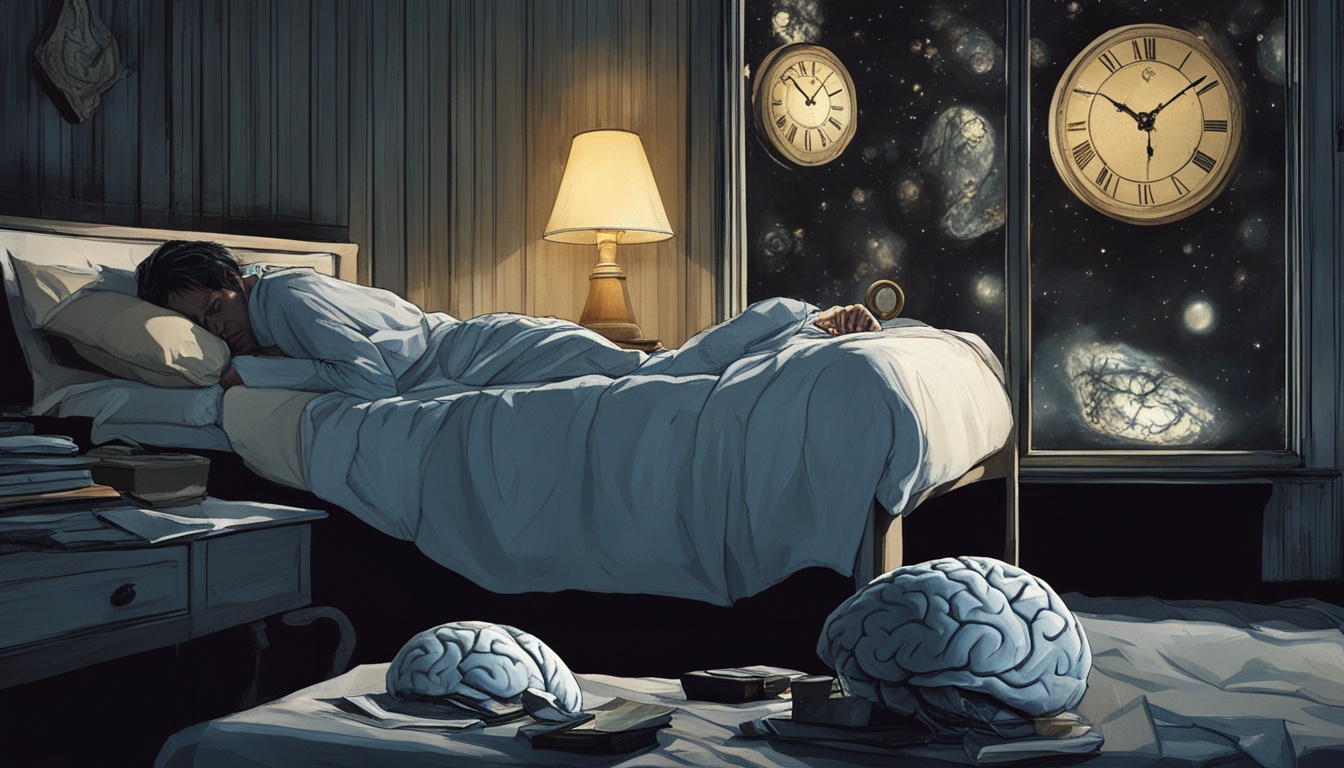DSWPD (Delayed sleep-wake phase disorder) is a type of circadian rhythm issue. It makes people go to bed and wake up later than usual. This condition affects between 0.2 to 10% of the population. This can cause ongoing sleep problems and make it hard to follow regular schedules, like those for work or school.
The exact reason for DSWPD is not clear. Scientists think it comes from a mix of things like your genes and how much light you get. People with DSWPD find their sleep pattern is out of sync, which then leads to ongoing trouble sleeping and insomnia.
For those with DSWPD, treatments like melatonin pills, exposure to bright lights, and talking therapies can be helpful. These methods are designed to help reset sleep timing and encourage healthy sleep habits. There’s also exciting research into using stem cells as a new way to treat DSWPD. This happening in Thailand may offer hope for those dealing with this disorder.
Key Takeaways:
- DSWPD is a circadian rhythm disorder characterized by a delayed onset of sleep and wakefulness.
- It affects 0.2-10% of the general population and can cause chronic sleep deprivation.
- The exact cause of DSWPD is unknown, but genetics and environmental factors play a role.
- Treatment options include melatonin supplementation, bright light therapy, and cognitive behavior therapy.
- Stem cell therapy is being explored as a potential treatment option for DSWPD in Thailand.
Symptoms of DSWPD
Delayed sleep-wake phase disorder (DSWPD) brings several symptoms that mess with sleep and daily life. Knowing these signs helps doctors diagnose and treat the disorder. The main symptoms to look out for are:
- Delayed sleep onset: People with DSWPD find it hard to fall asleep when most do. This usually happens between 2 a.m. and 6 a.m. It messes up their sleep routine and affects what they can do during the day.
- Difficulty waking up: Late sleep makes waking up hard. This leads to mornings when they feel really tired and find it tough to get going. Their alertness and work suffer because of this.
- Excessive daytime sleepiness: Even if they slept enough, DSWPD makes them feel too sleepy during the day. They can’t keep their eyes open and perform poorly in their daily tasks. This affects their work and school.
- Circadian rhythm disruption: DSWPD throws off their body clock that controls when they sleep and wake. It makes them feel wide awake when everyone else is asleep. Following normal sleep times becomes very hard for them.
- Late-night alertness: They might feel super awake at night, which delays their sleep even more. It’s a cycle where being alert keeps them from sleeping. This late-night energy adds to their problem of not being able to fall asleep easily.
These signs of DSWPD can really mess up someone’s life. They can lower how much work they get done, affect their performance in school or work, and change their moods. It’s very important to spot these signs early so they can be managed well.
| Symptom | Description |
|---|---|
| Delayed sleep onset | Difficulty falling asleep at a socially acceptable time, typically between 2 a.m. and 6 a.m. |
| Difficulty waking up | Struggling to wake up at a normal time, leading to grogginess and reduced alertness. |
| Excessive daytime sleepiness | Feeling overwhelming tiredness and struggling to stay awake during daily activities. |
| Circadian rhythm disruption | Experiencing a disturbance in the internal body clock, leading to a mismatch between sleep-wake cycles and conventional schedules. |
| Late-night alertness | Feeling more alert and awake during late-night hours, making it difficult to fall asleep. |
Causes and Diagnosis of DSWPD
Delayed sleep-wake phase disorder (DSWPD) is a condition with many influences. It’s tied to both genetics and lifestyle habits. While we don’t completely understand what causes DSWPD, we do know it’s a mix of your genes and how you live.
Family history is a big deal in DSWPD. If your family has a history of the disorder, you might experience it too. This is because certain genes that control your sleep-wake cycle can play a part.
Lifestyles can impact DSWPD as well. Things like working late shifts or not keeping a regular sleep schedule can throw off your body clock. The light from screens at night can make it worse, too.
Diagnosing DSWPD takes a detailed look at your sleep patterns and health history. Tests like polysomnography and actigraphy give more insights into your sleep habits. They help doctors understand your condition better.
Knowing what causes DSWPD is key to treating it. By pinpointing the genetic and lifestyle factors, doctors can make treatments that suit you. This makes the treatment more effective.
Genetic and Environmental Factors Associated with DSWPD
| Genetic Factors | Environmental Factors |
|---|---|
|
|
|
Stem Cell Therapy for DSWPD – An Innovative Treatment
Stem cell therapy is showing promise in treating Delayed Sleep-Wake Phase Disorder (DSWPD). Stem cells can change into many cell types. This includes the ones that help control our sleep and wake cycle. So, they might be the answer to dealing with DSWPD’s root causes.
In Thailand, scientists are working on using stem cell therapy to treat DSWPD. They’re looking into how stem cells can help the body heal itself. This could lead to better sleep and fewer troubling DSWPD symptoms.
Initial findings from these studies are exciting. People who’ve tried stem cell therapy are saying their sleep is getting better. Plus, they’re needing less medication. This fresh method could change how we deal with DSWPD, offering lasting relief.
Still, there’s more to learn on how well and how safe stem cell therapy is for DSWPD. But, the progress and success so far show it might shape the future of handling sleep disorders. This could mean big things for patients down the road.

